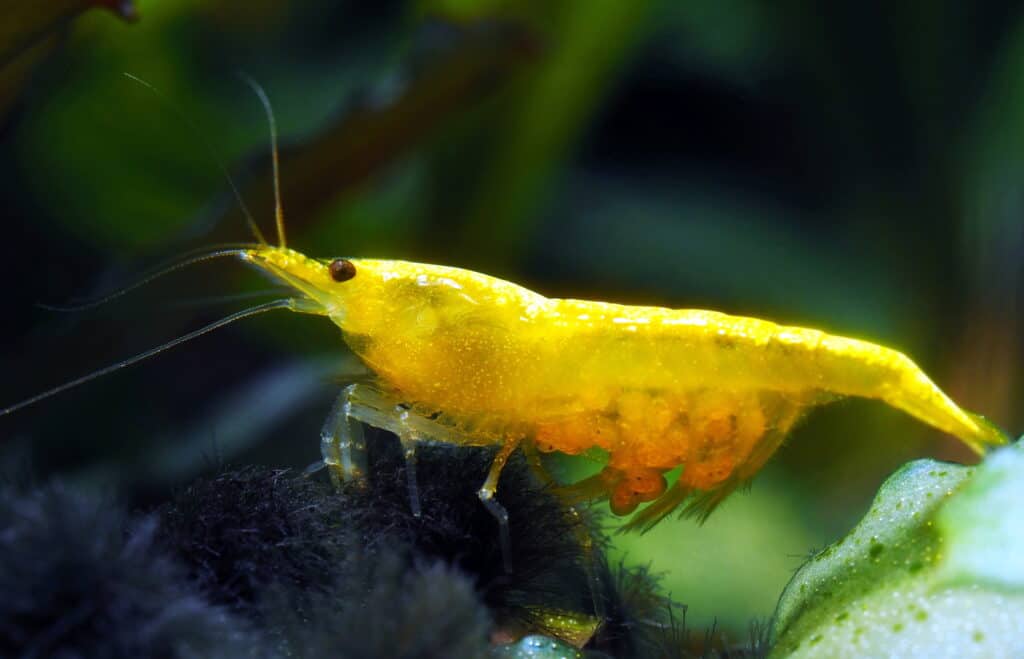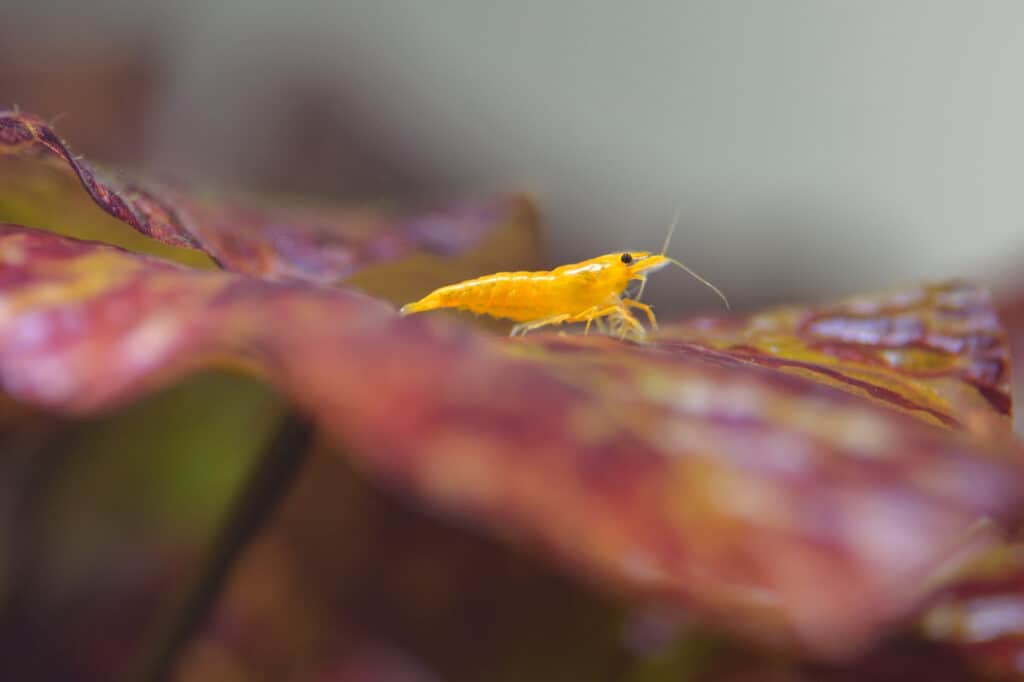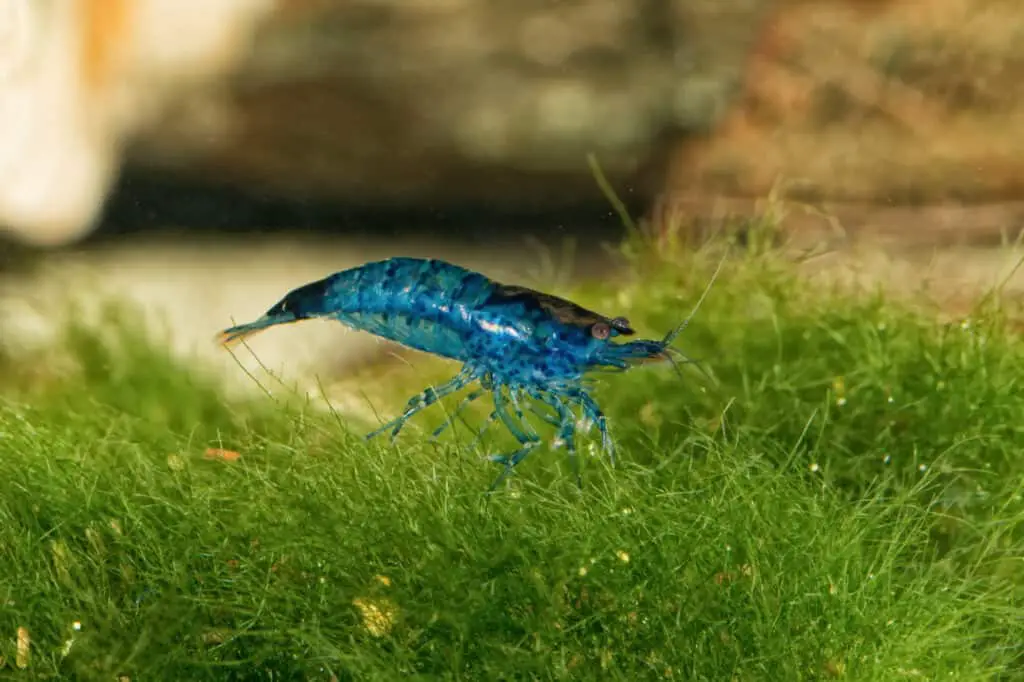
Neocaridina shrimp, also known commonly as the cherry shrimp or the color variations associated with it such as blue velvet, yellow rice, green jade, orange pumpkin, Rili variations, black rose shrimp and numerous more will all grow at similar rates being from the same family.
Knowing when and how fast these freshwater shrimp will grow can be important for many aspects such as breeding, monitoring overall health, and knowing when they will be ready to possibly be moved to different tanks depending on the other inhabitants.
On average Neocaridina shrimp will take six months to reach full adult size from hatching, and breeding maturity will take between 4 and 6 months.
Factors such as water quality, diet, temperature, and the stability of the environment will impact these numbers.
Let’s dive deeper into the factors that can impact the length of time for full growth and maturity, and how to maintain steady and healthy growth during their growing stages.
Lifecycle and Maturity of Neocaridina Shrimp
From egg to full maturity, the Neocaridina shrimp, also referred to as the cherry shrimp or its variations, goes through four stages.
The first is the egg stage, here there are roughly 15 to 40 days between a female having eggs and them hatching.
Once hatched the shrimp have entered the larvae, sometimes referred to as the shrimplet stage.
Another 60 days and the shrimp will now begin the juvenile stage.
Between the egg to larvae, and larvae and juvenile stages are where the quickest, and largest growth occurs.
Depending on the environment, and the shrimp themselves it can take anywhere from this point, the shrimp will be able to begin reproducing in roughly 15 days for some shrimp, though it can take up to a couple months for them to reach their final adult size.

Factors That Will Have An Influence On Neocaridina Shrimp Growth
At the top of the list of factors that can influence the rate at which these shrimp will grow is the quality of the water.
For Neocaridina shrimp to thrive, they should be living in clean, well-filtered water.
Among other things, the water quality has stable parameters.
Ranges give an idea of levels that allow the shrimp to thrive, but keeping them stable is key.
Having parameters that constantly change, even if within ideal ranges can cause stress to the shrimp, resulting in molting and breeding issues, along with a possible slowdown in their growth process.
Temperature will also play a role in how long it will take cherry shrimp, and other members of the Neocaridina family to grow.
Ideally for optimal growth, temperatures should be in the range of 72-78 degrees Fahrenheit
Lastly, nutrition is the final piece of the puzzle to creating the optimal environment and situation for cherry shrimp to grow optimally.
Well-balanced proper nutrition will promote healthy development and, and turn allow the shrimp to grow at the fastest rate they can.

Tips For Promoting Healthy Growth For Your Shrimp
The end goal for healthy and quickly growing shrimp is a stress-free environment.
This involves both the tank parameters, along with tankmates, and the setup of the tank.
There are two schools of thought when deciding if tankmates are suitable for a shrimp tank to support healthy growth.
Some believe that there should only be shrimp in the tank to avoid stress from fish preying on the shrimp or the young.
Others note that having some tankmates can provide beneficial nutrients and resources that wouldn’t be available without them, such as fish poop which is digested but still can have beneficial resources for the shrimp.
There is a case for both, but more important is what you feel comfortable with, and what other resources you have available to you.
If deciding to add tankmates, try to find smaller fish that have a less likely chance of trying to prey on the shrimp, fish that can’t fit the shrimp in their mouth will generally be good options, however also try to avoid any fish-prone to nipping which may cause stress to your shrimp that can cause slow, or stunted growth.
Adding places to hide, such as rocks, wood, decor, or live plants will also help reduce stress even if there are no tankmates, but with tankmates, it is important to have.
Live plants will also promote natural microorganisms to live and thrive which gives additional sources of nutrients, especially for the larvae and shrimplet stages when they require smaller size foods.
These added nutrients will increase the balance of their diets to promote healthy growth.
Another major concern when having shrimp is overcrowding as they are known to be prolific breeders.
When a shrimp population becomes too large for its tank it can lead to malnutrition as resources become used up, resulting in slower growth for the shrimp when food is being competed for.
Other necessary tank nutrients can also become unavailable such as calcium.
Calcium is vital for the shrimp to have the ability to molt when they begin to outgrow their current exoskeleton.
For the shrimp to grow they must first have their exoskeleton come off to be able to increase their size.
In the beginning stages, young shrimp may molt once a week, however as time progresses, and they grow closer to adult size, this will slow down to roughly once every 3 to 4 weeks.
The inability to shed this ‘skin’ can reduce and stunt their growth, and if this goes too long can result in death.
Final Thoughts
Understanding the life cycle of these shrimp, and having an idea of how their life stages should be progressing, enables you to monitor and know if the environment, diet, and water parameters are all aligned for healthy and quicker growth.
If you notice issues with the growth of your shrimp, be sure to test your water and make the necessary changes.
When doing water changes remember only to remove roughly 10 to 15% of the water per change to help reduce any sudden changes that may present themselves.
